Biological dosimetry
One task of CeRaD is to be able to answer the question that is important for people who are at risk from ionizing radiation: is the received radiation dose dangerous for health? The answer can be given on the basis of the biodosimetry methods, including cytogenetic tests implemented in the laboratory. These are:
- Comet assay and histone γH2AX foci test for determination of the initial DNA damage and DNA repair ability

Control lymphocyte (A) and X-irradiated with 3 Gy (B) as scored in the comet assay
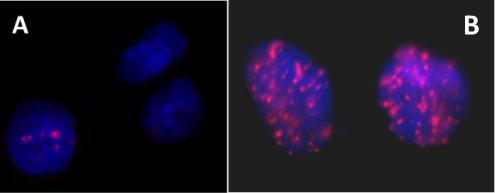
Histone γH2AX foci in CHO cells: control (A), X-irradiated with 1 Gy X (B)
- Micronucleus test for a preliminary dose range estimation
- Fluorescent in situ hybridization (FISH) for chromosomal aberration analysis
- Scoring dicentric chromosomes
- Scoring PCC (premature chromosome condensation) fragments
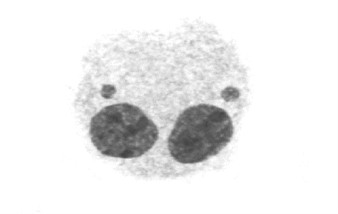
Binucleated cell with 2 micronuclei
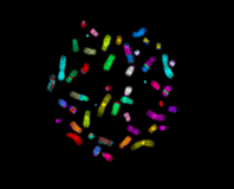
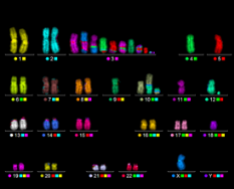
Human chromosomes stained with m-FISH. The lymphocyte was exposed to carbon ions 11.4 MeV ( 2Gy)
Biodosimetric methods measure certain chosen effects of irradiation. The listed above cytogenetic methods implemented in the lab determine the chromosomal DNA damage with various sensitivity and accuracy. Knowing the dependence between the extent of damage and radiation dose as estimated in model experiments (dose-effect calibration curve) it is possible to estimate the dose absorbed by the person at risk. Hence, reliable biodosimetric methods are indispensable for radiological protection and nuclear safety.
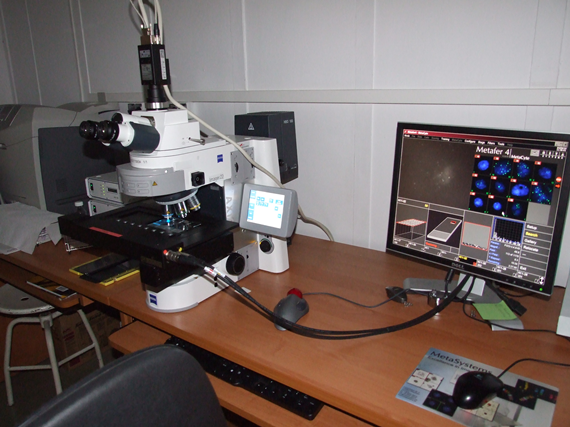 Automated Zeiss microscope with the image analysis system (Metasystems, Germany) used in the Biodosimetry Laboratory
Automated Zeiss microscope with the image analysis system (Metasystems, Germany) used in the Biodosimetry Laboratory






